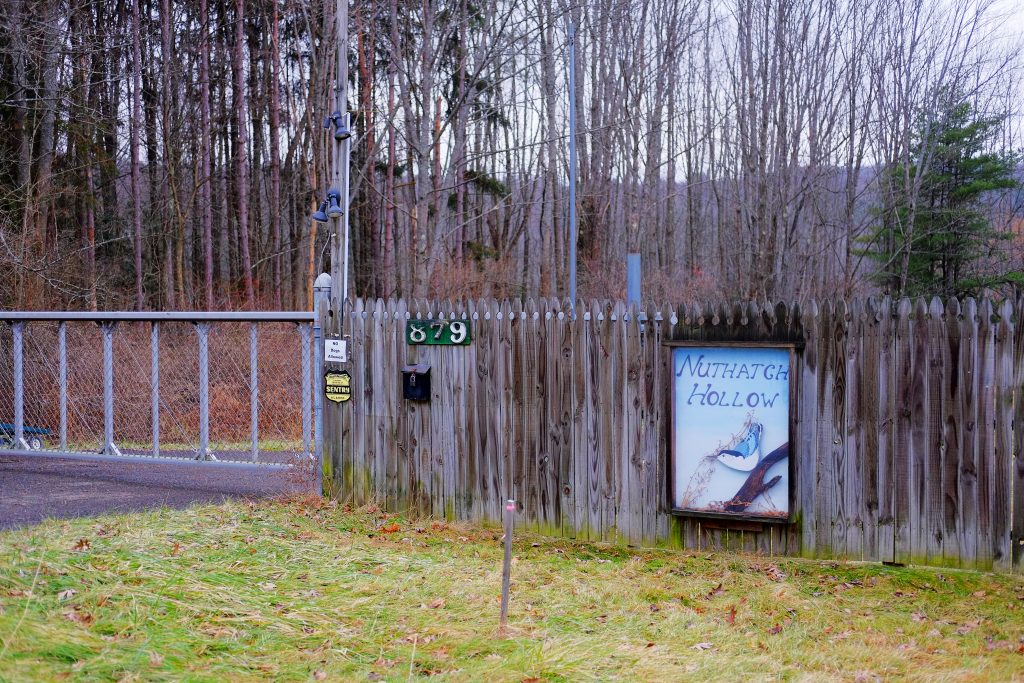Since 2016, Binghamton University has implemented measures to fight climate change through energy storage research, clean energy initiatives and policy changes. Now, the University is contributing to state and local initiatives that are emerging to tackle the issue.
According to the Environmental Protection Agency, climate in the Northeast is projected to rise up to 10 degrees Fahrenheit by 2080, an issue that has pushed the University to take steps to reduce its environmental footprint, primarily through retrofitting buildings with energy-efficient technology and building new structures to net-zero energy standards, which require a building to produce as much energy as it consumes.
One example is the net-zero building project in the Nuthatch Hollow, a parcel of land near campus. The University is currently constructing an environmental research center that will have a Living Building certification, which means it will produce more energy than it uses. There are currently 22 buildings in the world that hold a Living Building certification.
In 2017, the University also finished construction on its Smart Energy Building, which is LEED Gold certified and produces some of its energy through renewable sources, such as solar panels. At the opening of the Smart Energy Building, BU President Harvey Stenger said the building would house the University’s increasing clean energy research.
“Smart energy. That’s going to be our focus,” Stenger said. “The fact that these faculty are here and many are doing research in the areas of smart energy is a great advantage that we have.”
It has quickly become a focus at the state level as well. At the 2018 State of the University System Address, SUNY Chancellor Kristina Johnson announced that the entire SUNY system will aim to power 100 percent of its electricity from renewable sources as quickly as possible. SUNY also published the “Clean Energy Roadmap,” which states that each SUNY campus will have an individualized plan to reach 100 percent renewable sources by the end of 2020.
The University has also focused on advancing its academic efforts into clean energy fields. BU created a smart energy transdisciplinary area of excellence, placing smart energy as a focal point during the hiring process for new faculty and for deciding which research will be supported.
The majority of the University’s smart energy research has centered around the search for efficient energy storage, an area of smart energy research in which M. Stanley Whittingham, a distinguished professor of chemistry and materials science & engineering at BU, has been a leader since the 1970s, when he contributed to the creation of lithium-ion batteries. Whittingham and BU currently lead The NorthEast Center for Chemical Energy Storage (NECCES), which aims to expand the capabilities of lithium-ion batteries. NECCES has partnered with several other academic institutions, including Cambridge University, Massachusetts Institute of Technology and the University of California at San Diego.
Adam Flint, director of clean energy programs for the Binghamton Regional Sustainability Coalition (BRSC), said energy storage is one of the main issues holding back the use of clean energy.
“A critical piece to using renewable energy is one of the only things we need some improvement on the technical side: energy storage,” Flint said. “That’s really the final frontier. If energy generation depends on something like winds, you need to be able to store that energy in the places that need it for the periods of time they need it.”
The University’s focus on exploring energy storage has attracted funding. In July 2018, the Department of Energy (DOE) awarded Whittingham and NECCES $3 million to continue their energy storage research.
The smart energy focus that began at the University has also spread into the community. A Binghamton University student-run group, Intellectual Decisions on Environmental Awareness Solutions (IDEAS), created a program to fight climate change that picks up compost bins from students’ dorms or off-campus living spaces and gives it to a Broome County-based group, Volunteers Improving Neighborhood Environments (VINES). VINES uses the compost to grow community gardens. Amelia LoDolce, executive director of VINES, said that the key to success in local environmentalism is through a connected community.
“If the environmental movement is going to be widely embraced, it needs to connect to what’s important to people and the issues they face on a daily basis,” LoDolce said. “If we’re going to try to maintain a sustainable food system that has less impact on the environment, we need to also focus on all those other co-benefits the come with that — like building neighborhood connections and building a sense of pride within the community.”
Broome County has seen a recent implementation of a privately controlled solar farm in Ithaca, built and ran by BlueRock Energy in 2018. Residents of Ithaca, Binghamton, Elmira, Auburn and Corning can pay to be powered by solar energy from the farm through New York State Energy and Gas (NYSEG).
For Flint, it has been difficult to find ways to partner with the University, particularly with faculty. Nevertheless, Flint said he hopes to find a way to connect the efforts of BRSC and BU in the future.
“An example of a necessary change is through partnering with the community, and as it stands, the faculty have absolutely no incentive to partner with the community, if you weigh that against the things that determine whether they get tenure or not, whether they get promoted or not, whether they keep their jobs or not,” Flint said. “We have yet to find a way to collaborate with Binghamton University in a meaningful way. At the same time, I’ve watched the ebb and flow of the strength of student organizing and right now it is pretty strong.”



